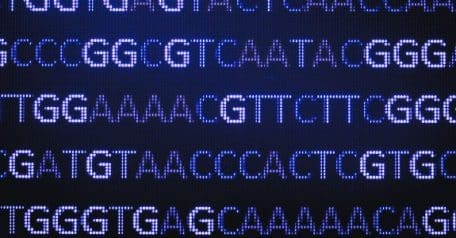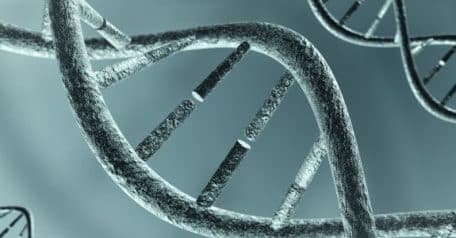It is sometimes necessary to make double-stranded DNA from single-stranded, complementary oligos. While the oligo annealing (also called DNA annealing, even if this annealing process can also be used for RNA) procedure is fairly straightforward, attention to a few details can help reduce the presence of undesired single-stranded material.
Oligo annealing protocol
-
- Resuspend—after briefly spinning down each oligonucleotide pellet, dissolve in Duplex Buffer (100 mM potassium acetate; 30 mM HEPES, pH 7.5; available from IDT)—this provides a buffering environment and the salt is necessary for oligonucleotide hybridization. Dissolve each oligo at high concentration (1–10 OD260/100 μL); see Table 1 for guidelines on resuspension volumes. Heating (up to 94°C) and vortexing will facilitate resuspension. Confirm the desired concentration by measuring the A260 of the solution and calculate the concentration using the extinction coefficient (ε) provided on the oligo spec sheet (A = εCL).
- Mix—add the 2 oligo strands together in equal molar amounts. This step is critical to avoid residual single-stranded material.
- Anneal—heat the mixed oligonucleotides to 94°C for 2 minutes and gradually cool. For many oligos "cooling" can be as simple as transferring samples from the heat block or water bath to the bench-top at room temperature. For sequences with significant secondary structure, a more gradual cooling/annealing step is beneficial. This is easily done by placing the oligo solution in a water bath or heat block and unplugging/turning off the machine.
- (Optional) Dilute—if needed, dilute the annealed oligonucleotides using Nuclease‑Free Duplex Buffer or 1X IDTE Buffer.
- Store—the resulting product will be in a stable, double-stranded form and we recommend that it is stored at 4°C or frozen.
Table 1. Recommended resuspension volumes.
| Oligo amount (nmol) | Volume for 100 µM | Volume for 50 µM | Volume for 20 µM | Volume for 10 µM |
|---|---|---|---|---|
| 10 | 100 µL | 200 µL | 500 µL | 1 mL |
| 25 | 250 µL | 500 µL | 1.25 mL | 2.5 mL |
| 100 | 1 mL | 2 mL | 5 mL | 10 mL |
Tips for annealing your oligos
Avoiding contamination and degradation—if you plan to use the duplex on multiple occasions, divide it into smaller aliquots and store at –20°C. Nuclease‑free Duplex Buffer is available from IDT and is certified nuclease-free by testing with IDT RNaseAlert® and DNaseAlert™ Kits.
Secondary structure—low yields of the expected, annealed product can be caused by secondary structure. Use the OligoAnalyzer™ program to determine whether there is significant secondary structure in the oligonucleotides. Problematic annealing can often be resolved by slow cooling, as described in Step 3, above.
Ligation—if the double-stranded oligonucleotide product will be used in a ligation reaction, you may need to add 5’-phosphates to the strand ends. These can be added at the time of oligo synthesis (chemical phosphorylation; done by request) or anytime thereafter (before or after annealing) using polynucleotide kinase (enzymatic phosphorylation).
Cloning—if the resulting double-stranded DNA fragment will be relatively long (>60 bp), or will be used in cloning, we recommend starting with PAGE-purified oligos (IDT can provide this service).
Annealing RNA—the IDT research team also uses this protocol to create siRNA duplexes from single-stranded, complementary RNA oligos.
Let us anneal your oligos for you!
For a small fee, IDT will anneal your oligos for you, so that you can proceed with your experiments as soon as your oligos arrive. To request this Duplex Service, go to the Duplex Entry page.
For additional information, contact us.
RUO23-1663_001.2
























